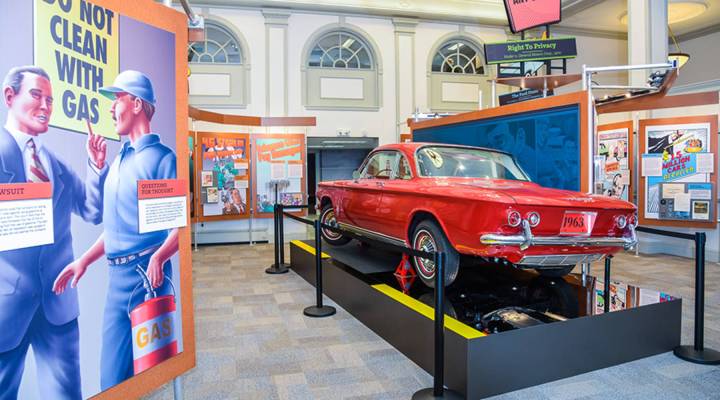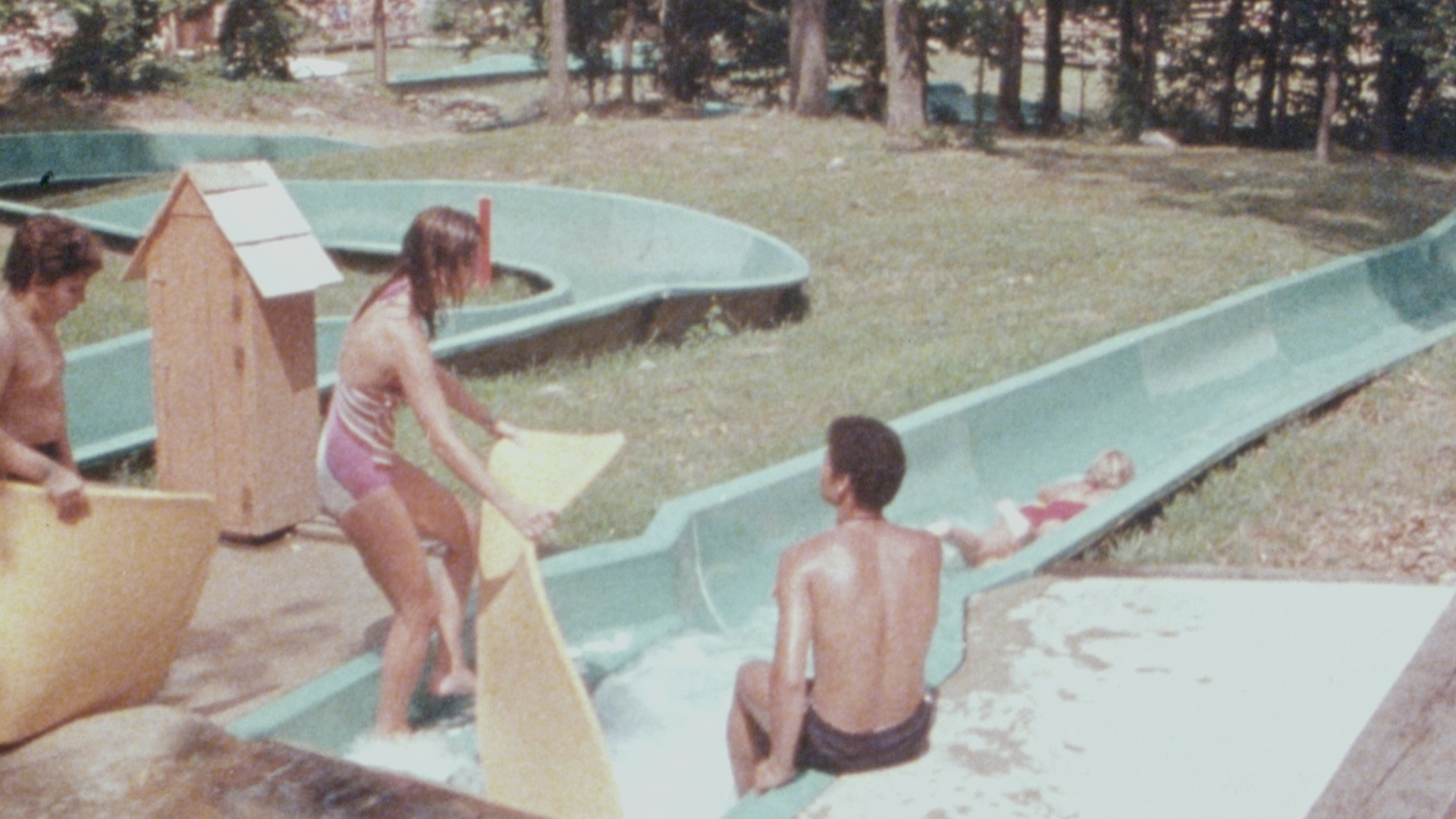
Ralph Nader wants you to wear a seat belt

Ralph Nader had a problem. As a young man he watched a number of friends die or get injured in car accidents, but he refused to accept that the unrelated events were a coincidence. Instead he began to ask questions about accountability: some of his answers were to be found under the hood.
In 1959, Nader wrote an editorial for “The Nation” connecting, in his mind, the dots between vehicle design and deaths or injury from driving. The young lawyer determined that even with information, the public would not demand safer cars.
Nader’s quest led him to the U.S. Department of Labor to research automobile safety. This work would determine the safety standards later set by the National Traffic and Motor Vehicle Safety Act. But before any legislation was passed, Nader took the information straight to consumers with the publication “Unsafe at Any Speed” in 1965. The book is often cited as the work that opened the door to the consumer protection movement and an era of automobile regulation.
Check out the timeline on Nader’s fight for improved auto safety:
Nader built his career on consumer protections. Tort law, the law of wrongful injuries, is how he and many others exposed unsafe products and practices. According to Nader’s own non-profit, the Center for Auto Safety, this push for greater car safety, to include seat belts and airbags, has saved more than 3.5 million lives in a little over 5o years. This work — and other aspects of the consumer protection movement — form the basis of Nader’s American Museum of Tort Law, the branch of law used to bring about greater regulation.
Now, more than 50 years later, a 1963 Chevrolet Corvair, what Nader calls “a beautifully deadly car,” is the central exhibit at the museum. The fact that the Corvair is off the road and has been since 1969, serves as an example of what can happen when tort law works.
For more on what tort law is and how it applies to consumer protection, Marketplace Morning Report’s David Brancaccio spoke with Ralph Nader at the American Museum of Tort Law in Winsted, Connecticut. Below is an edited transcript of their conversation.
David Brancaccio: It was years of work to get this place [the American Museum of Tort Law] funded. What drove you to want to do this?
Ralph Nader: It’s a great pillar of freedom in our country. Somebody who’s wrongfully injured can have a trial by jury under our Constitution. I don’t think people learn in high school much less college, the great defender that tort law is of their health and safety.
Brancaccio: Now right over here is a car. That’s a Chevy Corvair, 1963. When you look at it what comes to mind?
Nader: Comes to mind: a beautifully deadly car. It is a car that was unstable in cornering maneuvers, its steering column rammed back into the driver in a left, front type collision. And it leaked carbon monoxide which of course you can’t smell, taste, or feel. Otherwise, it’s really quite a stylish car.
Brancaccio: Do you see the fruits of your efforts built into pretty much any 2018 car?
Nader: Yeah, of course. I mean the cars today are much safer. I mean you got better brakes, better handling.
Brancaccio: And the car industry would have just done that?
Nader: They wouldn’t have done it, even though now they’re making money and bragging about it in advertising. But it all started with tort litigation against General Motors involving Corvair cars by a lawyer in California.

Brancaccio: What was your early insight that this was something interesting to you?
Nader: Because I lost a lot of friends who were killed and permanently injured [in] high school, college.
Brancaccio: Car wrecks?
Nader: Yes. The likelihood of being killed today in a car crash is one-fifth or one-sixth of what it was in the 1960s. And so I began looking into it. There were no seatbelts, no padded dash panels. I got angry and then I filled my head full of facts. So, fire in the belly, facts in the mind. That’s what makes democracy thrive.
Brancaccio: You see this area of law as a way to keep powerful interests, corporations somehow in check?
Nader: Of course, it’s the only tool that people can use without asking anybody’s permission. So if they’re wrongfully injured by a polluter or a company produces a dangerous product, they can go to a contingent-fee lawyer and have a trial by jury. And they can subpoena the most powerful people in these companies to come and be cross examined. Where else can you do that?
Brancaccio: And the idea here is, in your view, is to change behavior? It’s not soak corporations for money?
Nader: Well, it’s to make perpetrators pay the price of their damage when they kill, injure, make people sick, damage property, damage reputation. In the process, which is open to the public in the media, millions of people learn about these bad practices and defective products. And bad parties who are practicing the same kind of thing get the signal that they better shape up because they’re going to be sued too.
Brancaccio: I consider you on the political left. But is this issue, is it a partisan issue in your view?
Nader: Just the opposite. It’s why so many liberal and conservative visitors here are transformed because they know when they confront air or water pollution or a defective car, there’s no discrimination. Choosing conservatives over liberals, they all bleed, they all get sick. It’s what I call indiscriminate justice.
Brancaccio: But you don’t feel that you’ve sometimes paid more than you should for your car insurance because these lawyers are out suing in these accident cases?
Nader: Just the reverse, because the more safety built into cars, the less crashes, the fewer deaths, and the fewer claims on insurance companies. The tradition in the insurance industry used to be loss prevention. They need to pay attention to it again.
Brancaccio: We’re at a time of rapid technological change, especially in the auto industry. Some of these driverless cars will be on the road soon. They’re testing them even now. You wouldn’t want tort law to get in the way of experimenting with technology that could save lives ultimately…
Nader: Not if they experiment off the highway. We want tort law to get in the way of unsafe driverless cars for pedestrians and other motorists. Most definitely. And that seems to be the only brake now on this pell-mell rush on driverless cars without revealing the data for all their flamboyant claims.
Brancaccio: So in fact tort law in your view is going to play an important role in making sure that this moves in the direction of safety not in some other direction?
Nader: As long as the courts are open for the people of this country who are wrongfully injured to hold their perpetrators and wrongdoers accountable, that will be the fundamental safeguard. And if it is pursued we will get more action from the legislatures and from the regulatory agencies to do their job to protect the American people.
Ralph Nader shared a story about being followed by detectives as part of an investigation into his actions by GM. Follow along here to listen to an exclusive web interview.
There’s a lot happening in the world. Through it all, Marketplace is here for you.
You rely on Marketplace to break down the world’s events and tell you how it affects you in a fact-based, approachable way. We rely on your financial support to keep making that possible.
Your donation today powers the independent journalism that you rely on. For just $5/month, you can help sustain Marketplace so we can keep reporting on the things that matter to you.


















